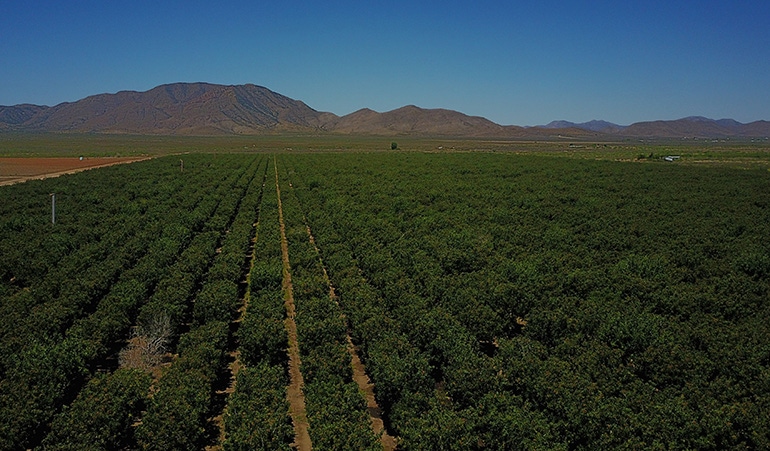
Aggie veteran Jim Graham tends to go “nuts” over “wine” because he wears more than one hat, staying busy tending to grape vines at his Golden Rule Vineyards while maintaining 21,000 pistachio trees spread out over 150 nearby acres in Southern Arizona.
As tariffs and trade issues join the current viral concerns, Graham continues to maintain a positive outlook.
“We walk around with our fingers crossed because a big percentage of Arizona pistachios wind up in Asian countries and the export market isn’t too healthy at the moment — plus we don’t have a handle yet on what the impact of the COVID-19 dilemma will be on our product demand.”
Last year was an “on” year for his Cochise Groves. “We had some weather challenges, but we still reached about 4,300 pounds per acre,” he said. Not too bad for an orchard that got started in 1981 with some hybrid tree stock and grew to be one of the largest remaining family-owned pistachio operations in the state. Other orchards are investor-owned corporations generally much larger in size.
Although pistachios are an alternating-year crop, he remains optimistic for the new harvest year: “It depends on what’s on the tree and ultimately, what ends up in the bin.”
It’s hard to get a handle on the exact number of farms, acreage, and poundage for pistachios in this state because official statistics are based on the every-five-year USDA Census of Agriculture and the last numbers go back to 2017, showing cash receipts for the specialty nut in excess of $8 million.
A slow start
Tree nut production was slow to get started in Central and Southeastern Arizona with pistachios not even cultivated in large quantities until the 1990s. While the number of farms cultivating nut trees has remained fairly steady over the past 20 years, total acreage has expanded.
With new growers investing in planting trees that will remain as non-bearing acreage for the foreseeable future, Graham says, “Ballpark figures on orchard acreage should be in the range of 10,000 acres now.”
According to official statistics, beginning in 2002 and over the next 15 years, pistachio acreage nearly tripled in size from 3,000 acres to about 9,000 by 2017, concentrated in Southeastern Arizona, home to high quality tree fruits and nuts.
“Pistachios are quite climate-sensitive and are grown in areas with conditions conducive for them to prosper,” Graham says. “Southeastern Arizona is one of those places because we have the needed number of chilling hours during the winter at our elevation of 4,350 feet.”
Like other growers in other locations, “We’re concerned about our long-term aquifer just like the nut growers in California.” Again, using figures that won’t be updated until 2022, total irrigation water use for Arizona’s tree nut industry was just over 118,000 acre-feet.
“As bearing acreage continues to expand, balancing the water needs of a growing industry with water supply sustainability for nearby communities and agricultural producers alike will continue to be an important issue,” according to the Arizona tree nut industry report.
So, with the negatives noted, how does Graham view Year 2020 for Arizona pistachios? “That remains the question,” he replies. “I’m concerned about what will happen to the markets, the tariff issues, and I’m also concerned about a downturn in the world economy and its impact on pistachios because they are a luxury item, not a necessity.”
For more news on tree nuts as reported by growers and farm advisors, subscribe to the Tree Nut Farm Press e-newsletter.
About the Author(s)
You May Also Like




